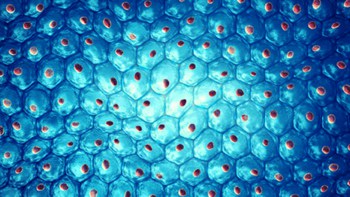This webinar was held on 24 June 2021. Available to watch now, it explores the practical aspects of acquiring high-resolution and nanomechanical data of peptide nanotubes
Want to learn more on this subject?
 The self-assembly of short peptides has been recently established as an easy route to various macromolecular nanostructures with promising applications in tissue engineering, biomedical devices and drug delivery. Some of these nanostructures may be used as degradable scaffolds for the fabrication of metal nanowires. Self-assembled peptides can form an array of nanostructures including nanofibrils, nanotubes, nanospheres and vesicles dependent on the constituent peptide or environmental conditions during assembly. They also display a range of nanomechanical and strong piezoelectric properties. Unveiling their molecular structure and mechanism of peptide self-assembly is crucial in understanding the precise molecular routes for medical conditions associated with protein misfolding such as Alzheimer’s disease.
The self-assembly of short peptides has been recently established as an easy route to various macromolecular nanostructures with promising applications in tissue engineering, biomedical devices and drug delivery. Some of these nanostructures may be used as degradable scaffolds for the fabrication of metal nanowires. Self-assembled peptides can form an array of nanostructures including nanofibrils, nanotubes, nanospheres and vesicles dependent on the constituent peptide or environmental conditions during assembly. They also display a range of nanomechanical and strong piezoelectric properties. Unveiling their molecular structure and mechanism of peptide self-assembly is crucial in understanding the precise molecular routes for medical conditions associated with protein misfolding such as Alzheimer’s disease.
Peptide nanotubes and similar structures are ideal objects for correlative AFM imaging – an approach to combine both molecular resolution and nanomechanical/nanoelectrical data within the same experiment. This approach could lead to the goal of correlating molecular structure of a peptide nanotube with its functional properties for the first time.
This webinar, presented by Vladimir Korolkov, will focus on the practical aspects of acquiring high-resolution and nanomechanical data with both PinPoint and True Non-Contact modes on a range of peptide nanotubes.
Want to learn more on this subject?
 Vladimir Korolkov received his PhD in chemistry from Moscow University in 2008. Then, he moved to the University of Heidelberg, Germany, and specialized in X-ray photoelectron spectroscopy of thin films, followed by the position at the University of Nottingham, UK, where he discovered his passion for scanning probe microscopy (SPM), and became a strong advocate of SPM techniques to unlock structure and properties at nanoscale. He pioneered the use of higher eigenmodes of standard cantilevers to routinely achieve resolution that was previously thought to be exclusively limited to STM and UHV-STM. Vladimir has currently published more than 40 scientific papers, including several in Nature. Though his expertise now contributes to industrial development of SPM technology as of 2018, his work continues to inspire and influence academic ventures in this field.
Vladimir Korolkov received his PhD in chemistry from Moscow University in 2008. Then, he moved to the University of Heidelberg, Germany, and specialized in X-ray photoelectron spectroscopy of thin films, followed by the position at the University of Nottingham, UK, where he discovered his passion for scanning probe microscopy (SPM), and became a strong advocate of SPM techniques to unlock structure and properties at nanoscale. He pioneered the use of higher eigenmodes of standard cantilevers to routinely achieve resolution that was previously thought to be exclusively limited to STM and UHV-STM. Vladimir has currently published more than 40 scientific papers, including several in Nature. Though his expertise now contributes to industrial development of SPM technology as of 2018, his work continues to inspire and influence academic ventures in this field.




